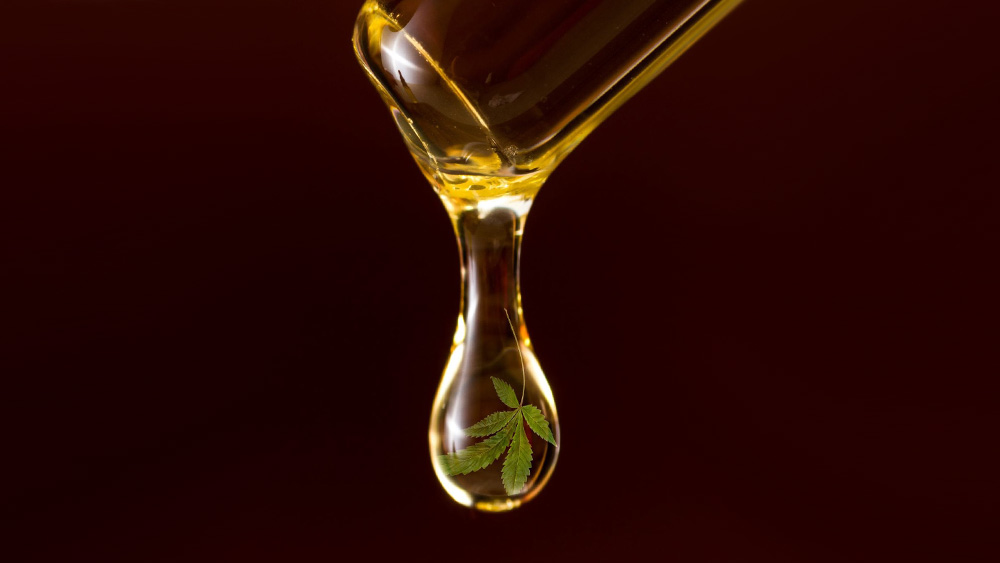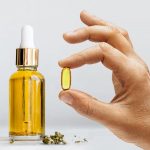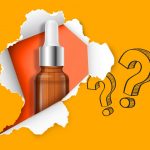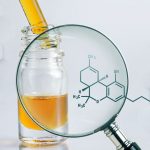CBD oil is gaining popularity as a great option for people who don’t want to use pharmaceutical medications to treat symptoms of different medical conditions.
Several studies that have been conducted until now support the claims about the health benefits of CBD. However, the effects of this compound on the body and its interaction with other medications are not yet fully researched.
If you’re new to CBD and you’re considering using it for health issues, you probably have a lot of questions: What is CBD oil exactly? How to take CBD oil and how to dose it? How will it affect your body and will it make you dizzy?
Searching for answers to all these questions can sometimes be overwhelming and not the most entertaining thing to do, but don’t worry -— you are at the right place.
This comprehensive guide will provide answers to these and many other questions regarding CBD oil products and how to use them.
What Is CBD Oil?
Cannabidiol (CBD for short) is an ingredient that can be found in the cannabis plant along with 113 (thus far identified) other ingredients unique to this plant. These active compounds are called cannabinoids.
Unlike the very popular cannabis compound called THC (tetrahydrocannabinol), cannabidiol doesn’t have any psychoactive effects. In other words, people can use it without worrying that it will make them “high”.
Maybe that is one of the main reasons why various products based on cannabidiol became so popular among consumers. CBD can be used for treating different medical conditions, but also as a supplement incorporated in a daily diet for maintaining health.
One of the most popular CBD products for treating different conditions is CBD oil.
CBD oil is a liquid product, made from cannabidiol that is dissolved in coconut or hemp seed oil.
Extraction of CBD can be done either from marijuana or hemp. Both CBD hemp oil and CBD cannabis oil are widely available on the market.
Hemp has very low levels of THC, so the oil made from it has little to no psychoactive ingredients. Also, not all CBD-infused hemp oils are the same. Some of them only have CBD, while others can have other ingredients besides cannabidiol.
CBD cannabis oil can have higher levels of THC, but also higher CBD levels. That’s why the oil that is made from cannabis has more concentrated CBD. In other words, for the same amount of CBD extraction you will need more hemp than cannabis plants.
CBD Oil Benefits
As mentioned before, the non-psychoactive characteristic of the CBD and the fact that users are safe from unpredictable (“high”) effects on their body make CBD oil a good candidate to serve as a medical and wellness supplement.
There are a number of studies that speak in favor of CBD for treating and easing the symptoms of many conditions.
According to these studies, CBD has many health benefits:
- Relieves symptoms caused by PTSD, such as insomnia and anxiety (1)
- Reduces levels of stress and anxiety (2)
- Helps in managing psychosis, since it has antipsychotic effects (3)
- Combats inflammation and reduces MS symptoms (4)
- May help in reducing and treating acne (5)
- Reduces neuropathic pain (6)
- Reduces the frequency of seizures connected with epilepsy (7)
At first, it may seem a little suspicious that one compound can affect so many different conditions connected to different parts of the body. To understand this, you need to know more about the endocannabinoid system (ECS).
ECS is a newly discovered biological system in humans and many animals. Its main role is to regulate some of the essential bodily functions (such as pain response or sleep) and maintain inner balance (homeostasis) within the body.
The endocannabinoid system consists of endocannabinoids, receptors, and enzymes. When a person experiences medical issues, that is a good indicator that homeostasis has been disrupted and there is a lack of endocannabinoids in the human body. When CBD enters the human body, it helps ECS in maintaining the homeostasis or restoring the disrupted balance.
CBD indirectly interacts with the ECS system by influencing the reaction of endocannabinoid receptors.
For example, CBD can affect the ECS to inhibit an enzyme that is responsible for breaking down a natural endocannabinoid called anandamide. Anandamide has an important role in regulating memory, pain, sleep, and mood. Also, cannabidiol can affect the behavior of different receptors that are responsible for regulating inflammation and body temperature.
How to Take CBD Oil
When you find the right CBD brand and the producer you want to buy the oil from, the next steps are:
- choosing how to consume it and
- finding the right dose.
There are several ways to take CBD oil. The method you choose should depend on your preferences and the reason why you want to consume it.
Taking CBD oil differs if you are using it to treat symptoms of some medical condition or just as a wellness supplement to keep your body healthy. Also, different medical conditions require different ways of taking the CBD.
For instance, if you want to treat a skin condition with cannabidiol oil, it is better to use creams and lotions than other methods, and to apply the product directly on the place that needs to be treated.
The great thing about CBD oil is that it can be used in many different ways. It is produced in a variety of forms such as vape juice, capsules, tinctures, sprays, lotions, and creams. Basically, there is an option for everyone.
Different ways of consumption affect the speed with which a user starts to feel the effects, the amount of time the CBD stays in the bloodstream, and how quickly it leaves your body.
There are four basic methods for taking CBD oil: inhalation, topical application, ingestion, and sublingual application. The method depends on the form of the product.
Here is a list of different types of CBD oil products, followed by an explanation of how to use each of them:
- CBD vape oils
- Capsules
- Edibles
- Tinctures and sprays
- Concentrates
- Sprays
- Topicals (lotions, creams and salves)
- CBD oil patches
CBD Vape Oil
Vaping is a method of inhaling CBD oil using a device called a vaporizer or vaping pen. If you decide to take your CBD oil using this method, you will need a vaporizer and CBD vape oil.
Vaporizers come in many styles and shapes, with many interesting features. After choosing your CBD oil and vaporizer brand, simply put the oil in the device, heat the device and inhale.
Vaping is the most efficient way to take cannabidiol because it has the quickest onset time..
When you inhale the oil, the CBD from it enters the bloodstream through the lungs.
Since lungs consist of a huge number of capillaries, CBD is very quickly transferred to the bloodstream and you can feel the effects almost instantly. Vaping is, therefore, a great choice for people who want quick pain relief.
On the other hand, fast absorption also means that the effects of CBD quickly fade away. To extend the effects of CBD on your body, you will need to take more short puffs or fewer longer puffs.
Another great thing about vaping is that you can easily control your dosage. You can measure the dose you need and put it in the vaporizer, so there is no concern about getting the right amount of oil.
This method can seem a little complicated for people who are new to vaping. The best advice for vaping beginners is to start with small puffs, and then over time explore different vaping methods and find the one that best suits you.
Still, if you are not a fan of vaping, there are many other ways to take CBD oil.
Capsules
Taking CBD oil in the form of capsules is a good choice for anyone who is not a fan of vaping or doesn’t like the taste or feel of oil in the mouth.
These capsules consist of exact, pre-measured amount of CBD oil. They are small, shaped in a way that allows easy swallowing. They are by far the easiest when it comes to dosing.
Adding CBD oil capsules to your daily routine is very easy, since you can take them as any other supplement pills. After all, this way of consumption doesn’t require any additional accessory or equipment, which makes it practical when you are in a hurry and you don’t feel comfortable using any other CBD oil product.
The tricky part about capsules is that you need to wait longer to feel the effects of the CBD. When you take a pill, it goes from your mouth to your stomach where it is dissolved. In other words, the pill will spend some time in your digestive tract before it takes action on your body.
People usually use oil in this form to keep their body healthy, or for treating seizures and digestive disorders.
Edibles
Edibles are, simply said, cannabidiol-infused food. They are a wise choice for anyone who is new to consuming CBD oil.
They can be found in various interesting shapes and flavors. Candies, chocolates, brownies, butter, popcorn, and salad dressings are only some of the CBD oil edibles. The fact that CBD oil can be consumed in the form of popular foods is the reason why edibles are favorite among people.
When it comes to approximated time for the oil to start to “work”, this way of consumption is pretty similar to consuming capsules. CBD oil from edibles needs to pass through your digestive system in order to get into the bloodstream and bind to cannabinoid receptors.
That means you will need to wait a while to feel the effects of the oil, especially if the edible consist of ingredients that take more time to digest.
If you are more experienced with dosing oil, making edibles at home can be an interesting option and something of a coolinary challenge. You can try adding a personal touch to some of the numerous recipes for edibles found online.
CBD Oil Tinctures and Sprays
A common way to take CBD oil tinctures and sprays is sublingual consumption. That is when a user consumes CBD oil by spraying or placing a few drops of oil under the tongue.
Besides this consumption method, tinctures can be used orally by adding them to various drinks or food.
It is recommended to wait a few seconds before swallowing the tincture because CBD can be absorbed by the skin. Many blood vessels are located in the skin under the tongue, so when CBD from oil gets in contact with them, is gets easily transferred to the bloodstream.
This way the CBD doesn’t go through the digestive tract and so it is more quickly transferred to the blood, compared to CBD in products that need to be digested.
If you want fast effects for pain or anxiety relief, this method could be an optimal choice for you.
CBD oil is also produced in the form of sprays. The same as tinctures, sprays are often made in many different flavors and are perfect for anyone who wants to avoid the earthy taste of the CBD oil.
The amount of oil per serving should be stated on the label, so you can easily calculate the number of takes you need to get the desired effects.
Easy usage and practical packaging are reasons why sprays are the main choice for many people when it comes to consuming CBD oil.
CBD Oil Concentrates
CBD oil concentrates are very popular among people who want to feel the benefits of cannabidiol quickly.
Compared to other products, the concentrates have the highest levels of CBD, which means you will need a small amount of concentrate to quickly get the desired effects.
These usually unflavored products are packed in syringes with a set amount of concentrate, and the amount is stated on the packaging label.
The application of concentrates is very practical and simple. Just dispense the amount of concentrate you want from the syringe and place it under the tongue. Be sure to wait a minute or two before swallowing the rest of the oil, so the CBD can be absorbed by the skin tissue.
The amount of CBD concentrate recommended for use during one application is the size of one grain of rice.
Topicals (Lotions, Creams and Salves)
CBD oil topicals are mostly used for pain relief, treating different skin conditions, or improving skin health.
An interesting thing about this method is that CBD applied on the skin with a lotion never gets into the bloodstream or travels through the whole body.
For that reason, people use topicals to treat sore muscles or to relieve local pain that occurs on specific parts of the body.
As with many skin care products, CBD is not the only ingredient that can be found in topicals. During the manufacturing process, many producers use perfumes, essential oils, and different chemicals as lotion bases.
Some of these compounds can cause an allergic reaction and skin irritation in some people. Therefore, before using CBD oil lotions or creams, look for the ingredient list on their labels and check if the topical contains an ingredient that you should avoid.
As for the dose of a CBD topical that you need to use, experiment and find the amount that works well for you.
CBD Oil Patches
Transdermal patches are lightweight and convenient when you don’t want to think about the exact time for your next dose.
They come in different doses of CBD per patch and recommended wearing times.
They have an adhesive surface and a pad with CBD oil. When you want to use them, simply peel the adhesive surface off and place a patch on a particular spot you want to treat.
During the time you’re wearing it, the skin absorbs the oil and cannabidiol gets into the bloodstream, allowing you to feel the CBD effects.
It is always recommended to put a patch on a venous part of the skin, so cannabidiol can easily get transferred to the blood. You will feel the effects of the CBD oil during the entire recommended wearing period.
With all these various products that exist on the market, it’s easy to find a way to take CBD oil that will become your favorite. Remember that you don’t need to stick to only one method. You can combine them and use different products depending on how you want to consume the oil or on the condition you want to treat.
CBD Oil Dosage: How Much to Take?
Using CBD oil as an alternative to pharmaceutical medicine is a novelty and deciding how to dose it is an enigma for many people. Furthermore, the FDA hasn’t set the Recommended Daily Intake (RDI) for CBD, which makes it even harder to set the dose for treating different symptoms.
Since there is no unique recommended serving dose for all conditions and all users, people have been using CBD oil in wide dose ranges for treating different symptoms.
Medscape’s publication “What Is the CBD Dosing Required for Effective Pain Relief?” from 2018 published their results on the dose range of CBD oil used.
“The optimal therapeutic dose of CBD has not yet been determined, and it has been used in a wide dose range from 2.85 to 50 mg/kg/day.”
The important thing to mention is that there is no exact dose of the oil that will “work” the same way for different people. The amount of CBD that someone should use depends on several factors:
- Concentration of CBD in a particular product
- Presence of other cannabinoids in the product besides CBD
- Particular condition that needs to be treated and characteristics of the consumer’s body (e.g. weight, metabolism, age etc)
Therefore, it is always advisable to start with lower doses and to increase the amount with time.
Dr. Dustin Sulak, one of the top medical cannabis experts in the U.S, shared his dosing practices in Greencamp’s CBD dosing eBook and said that a good optimal starting dose of CBD is 2.5 mg spread throughout the day.
If you don’t feel the effects with this dose, you should alter it.
“If this dose isn’t bringing the positive effects, increase the amount by 2.5 mg every day, and follow this pattern until you reach the desired therapeutic relief.”
CBD isn’t toxic so don’t be afraid to freely try different doses until you reach the optimal one. That is clearly stated in a review of 132 original studies, titled An Update on Safety and Side Effects of Cannabidiol:
“Several studies suggest that CBD is non-toxic in non-transformed cells and does not induce changes on food intake, does not induce catalepsy, does not affect physiological parameters (heart rate, blood pressure and body temperature), does not affect gastrointestinal transit and does not alter psychomotor or psychological functions. Also, chronic use and high doses up to 1,500 mg/day of CBD are reportedly well tolerated in humans.” (9)
CBD can produce some side-effects, as one study (10) showed, such as: anxiety, nausea, vomiting,diarrhea, dry-mouth, mood and appetite changes, but they are well-tolerated.
Another side-effect that is not fully researched is CBD interfering with other medications.
Cannabidiol uses enzymes that are crucial for metabolising some drugs in the body and in that way it can reduce or increase their effects.
It’s worth mentioning that whole-plant CBD extracts showed to be more beneficial to the body than CBD isolates. Isolates are the “purest” form of CBD which contains only the cannabidiol, and no other cannabinoids, plant components, or any other compound.
The study (11) that was conducted in 2015 showed that CBD and other ingredients extracted from the whole plant create a synergistic effect, and that is more beneficial in combating inflammatory conditions than single compound isolates.
That means that if you choose a product that has CBD oil extracted from the whole plant, you will need smaller amounts of the extract to achieve beneficial effects.
Whether you will choose to use isolates or CBD oil extracted from the whole plant is only a matter of preference, since both isolates and whole-plant extracts have positive effects on our health.
Conclusion
Looking at all the evidence of how CBD oil can help with health issues, we can conclude that there is no one best way to take CBD oil, nor one dose that will bring everyone the same benefits.
Every person is different and so are their preferences, health goals, and body chemistry. CBD oil comes with a wide range of consumption methods, so the possibility of not finding an adequate one is very low.
Experiment with different ways of using CBD oil, take baby steps with dosing, and find what suits you best.
References:
- Shannon S, Opila-Lehman J; Effectiveness of Cannabidiol Oil for Pediatric Anxiety and Insomnia as Part of Posttraumatic Stress Disorder: A Case Report; The Permanent Journal; 2016; 20(4):108-111.
- Blessing EM, Steenkamp MM, Manzanares J, Marmar CR. Cannabidiol as a Potential Treatment for Anxiety Disorders. Neurotherapeutics. 2015;12(4):825-36.
- Zuardi AW, Crippa JA, Hallak JE, Bhattacharyya S, Atakan Z, Martin-Santos R, McGuire PK, Guimarães FS; A critical review of the antipsychotic effects of cannabidiol: 30 years of a translational investigation; Current Pharmaceutical Design; 2012; 18(32):5131-40.
- Mecha M, Feliú A, Iñigo PM, Mestre L, Carrillo-Salinas FJ, Guaza C; Cannabidiol provides long-lasting protection against the deleterious effects of inflammation in a viral model of multiple sclerosis: a role for A2A receptors; Neurobiology of Disease; November 2013; 59:141-50.
- Oláh A, Tóth BI, Borbíró I, Sugawara K, Szöllõsi AG, Czifra G, Pál B, Ambrus L, Kloepper J, Camera E, Ludovici M, Picardo M, Voets T, Zouboulis CC, Paus R, Bíró T; Cannabidiol exerts sebostatic and antiinflammatory effects on human sebocytes; The Journal of clinical investigation; September 2014;124(9):3713-24.
- Welty TE, Luebke A, Gidal BE; Cannabidiol: promise and pitfalls; Epilepsy Currents; September 2014; 14(5):250-2.
- Kaur G, Andriola M, Manganas L; Efficacy of Cannabidiol in Children with Intractable Epilepsy; Neurology; April 2017; 88(16).
- Damian M; Laurie B; What Is the CBD Dosing Required for Effective Pain Relief?; December 2018.
- Bergamaschi MM, Queiroz RH, Zuardi AW, Crippa JA; Safety and side effects of cannabidiol, a Cannabis sativa constituent; Current Drug Safety; September 2011; 6(4):237-49.
- Iffland K, Grotenhermen F; An Update on Safety and Side Effects of Cannabidiol: A Review of Clinical Data and Relevant Animal Studies; Cannabis and Cannabinoid Research; June 2017; 2(1):139-154.
- Ruth G, Zhannah Y, Lumír OH; Overcoming the Bell-Shaped Dose-Response of Cannabidiol by Using Cannabis Extract Enriched in Cannabidiol; Pharmacology & Pharmacy;2015; 75-85.








